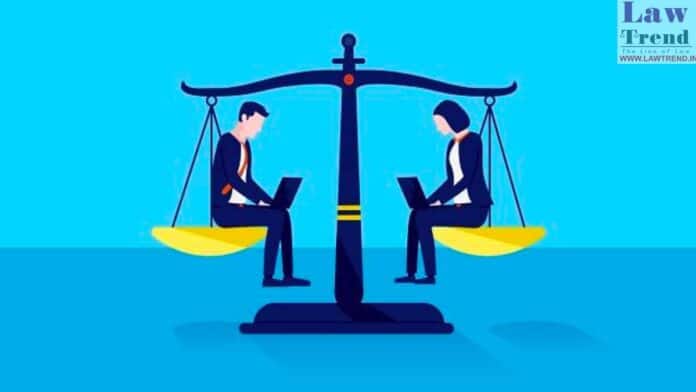Human Rights
In general, human rights can be viewed as fundamental and inalienable rights that are essential to human life. Human rights are the rights that all people have simply because they are human, regardless of nationality, race, religion, gender,etc.
Human rights, therefore, are rights inherent in our nature, without which we cannot live as human beings. Human rights and fundamental freedoms enable us to fully develop and use our human qualities, intellect, talents and consciences to meet our physical, emotional and other needs. They are based on humanity’s growing demand for a life in which the inherent dignity and worth of every human being is respected and protected. “Human rights are sometimes referred to as fundamental rights or fundamental rights or natural rights.
As fundamental rights or fundamental rights they are rights that cannot be deprived by the action of legislative bodies or governments, but are enshrined in the Constitution. and often enshrined in constitutions, as natural rights they are considered inherently the property of men and women.
They are sometimes called “common rights.” . Because it is a right shared by all men and women around the world. In England, for example, customary law was a collection of rules and customs that governed the entire country, as opposed to local customs. (Kapoor, S.K. 2004). Human Rights covers many areas of politics, economy and society. Human rights don’t just define needs, they represent a set of rights for every person, no matter where that person is.
United Nations and Human Rights :
In 1948, the United Nations General Assembly issued the Declaration of Human Rights. This declaration has a unique significance as it marks individual victory in both domestic and international affairs. specified in the preamble to the declaration. “The General Assembly proclaims this Universal Declaration of Human Rights as a common standard of performance for all persons and all nations, and with this Declaration in mind, the General Assembly proclaims that all institutions of society, through education and training, should strive to respect human rights. defend these rights and, through progressive national and international action, promote freedom, both among the peoples of Member States themselves and in the territories under their sovereignty. ensure universal and effective recognition and compliance; “
Human Rights may be classified into following four categories :
- General (Articles 1 and 2)
- Civil and Political (Articles 3 to 21)
- Economic, Social and Cultural Rights (Articles 22 to 27) and
- Concluding (Article 28 to 30)
- General
Article 1 of the Universal Declaration stipulates that all human beings are born free and equal in dignity and rights.
They have reason and conscience and should treat each other as brothers. Article 1 thus proclaims freedom of profit and the equality of dignity and rights of all human beings.
According to section 2, all persons, without distinction of any kind, such as race, colour, sex, language, religion, political or other opinion, national or social origin, property, A status of birth or other that entitles one to enjoy all the rights and freedoms set forth in this Declaration.
In addition, independent, fiduciary, non-autonomous or otherwise subject to sovereignty limitations on the basis of the political, judicial or international status of the country or territory to which the individual belongs. Regardless, no distinction should be made.
As noted above, what is remarkable about the Universal Declaration is that it is addressed to individual individuals rather than to States or Member States of the United Nations. This is clear from Articles 1 and 2. In this respect also, Article 29 deserves mention.
- Civil and Political
The civil and political rights enumerated under the Declaration include the following :-
- Rights to life, liberty and security of person.
- Prohibition of slavery and slavery trade.
- Prohibition of torture, cruel, inhuman or degrading treatment or punishment.
- Right to be recognized as a person before law.
- Equality before the law and equal protection of law against any discrimination in violation of the Declaration.
- Right to effective remedy by the competent national tribunals,
- Prohibition of arbitrary arrest, detention or exile.
- Right to a full equality to a fair and public hearing by an independent and impartial tribunal.
- Right to be presumed innocent until proved guilty according to law in public trial.
- Freedom from ex-post facto laws,
- Freedom from arbitrary interference with privacy, family, home, correspondence or attack honour or reputation and right to protection by law against such interference.
- Right to freedom of movement and residence within the borders of State.
- Right to leave any country, including his own, and to return to his country,
- Right to seek and enjoy in other countries asylum from prosecution in respect of political crimes,
- Right to nationality,
- Freedom from arbitrary deprival of nationality and right to change nationality,
- Right to many and to found a family and equal rights as to marriage, during marriage and as its dissolution,
- Right to own property and freedom from arbitrary deprival of property.
- Right to freedom of thought, conscience and religion,
- Right to freedom of opinion and expression,
- Right to freedom of peaceful assembly and association,
- Right to take part in the government of his country, and
- Right of equal access to public service in his country.
- Economic, Social and Cultural Rights –
Economic, Social and Cultural Rights are enumerated in Articles 22 to 27. They are :
- Right to social security and the right to realization of the economic, social and cultural rights indispensable for his dignity and the free development of his personality,
- Right to work, free choice of employment, just and favourable conditions of work and protection against unemployment,
- Right to equal pay for equal work,
- Right to just and favourable remuneration,
- Right to form and to join trade Unions,
- Right to rest and leisure,
- Right of living adequate for the health and well-being of himself and his family,
- Right of all children to enjoy same social protection,
- Right to education,
- Right to parents to choose the kind of education for their children,
- Right to participate in cultural life of the community, and
- Right to protection of moral and material interests resulting from any scientific literary or artistic production of which he is the author.
- Concluding or Miscellaneous Articles
Articles 28 to 30 do not fit into any of the three categories above and can therefore be explained conclusively or otherwise. For example, Article 28 provides that everyone is entitled to a social and international order in which the rights and freedoms set forth in this Declaration can be fully realized. That being said, Article 29(1) is an exception, as it is the only provision in the entire Declaration that speaks of obligations. Article 29 (1) provides for the devotion of all to a community in which the free and full development of their individuality is possible. However, Article 29, paragraph 2, provides for the sole purpose of properly recognizing and respecting the rights and freedoms of others, and that every person, in exercising his or her rights and freedoms, is required by law to: I am clarifying to follow the restrictions. Lawful claims of morality, public order, and public interest in a democratic society. Article 29(3) further provides that in no case shall these rights and freedoms be exercised contrary to the purposes and principles of the United Nations.
The final clause of the Declaration, i.e., Article 30, is interpreted to provide that nothing in this
Declaration shall be construed as conferring on any State, group or individual the right to engage in any activity which they may or may not engage in. Or contain rules of protection. Acts aimed at destroying the rights and freedoms described herein. (Kapoor, SK, 2004).
Article 1 of the 1948 Universal Declaration of Human Rights states: They have reason and conscience and should be against each other in a spirit of brotherhood. ” Elsewhere in the same document it states that “All men are equal before the law and are entitled to equal protection without discrimination” (art. 7). is the right of No one needs to earn or deserve human rights
EQUALITY IN INDIAN CONSTITUTION
As a signatory to the 1948 Universal Declaration of Human Rights, India incorporated human rights in word and spirit into its Constitution, which came into force on 26 January 1950. Many human rights are enshrined in the Constitution as basic rights of citizens. Article 14 Equal Rights Before Law:
“The State shall not deny equality before law or the protection of the law by the sovereign territory of India.” As women are denied the above rights , some additional laws were enacted to protect women from the discrimination that is ingrained in our patriarchal society. Under the IPC, provisions were made defining the offense of rape in custody and against the defendant. Like the Civil Rights Act of 1976 and the Dowry Prohibition Amendment Act of 1986, the Center and state governments have enacted many laws and regulations to protect basic human rights.
Section 16 guarantees “equal opportunity for all citizens in matters relating to employment or appointment to a government agency”. Section 16(2) prohibits discrimination based on religion, race, caste, sex, descent, place of birth, place of residence, or any one of them alone. these.
The human right to education is inseparable from other fundamental human rights – rights that are universal, indivisible, interrelated and interdependent. Human rights include equal partnership in family and society, decent standard of living, freedom of thought, conscience, religion and belief, equal pay for equal work and equal participation.
HUMAN RIGHT AND GENDER EQUALITY
Gender equality means equal visibility, empowerment and participation of both sexes in all areas of life, public and private. Gender equality is the opposite of gender inequality, not gender differences. Gender equality is an overarching principle that applies to the enjoyment of all civil, cultural, economic, political and social rights. The Human Rights Commission has made it clear that the right to equality between men and women is not only the right not to discriminate.
Gender Inequality in Society
There are two types of sex differences: direct and indirect. Direct gender inequality is when one person is treated more unfairly than another because of their sex, marital status, or pregnancy. Indirect inequality, on the other hand, is when equality requirements seem unfair to some people regarding gender, marital status, pregnancy, or potential pregnancy.
The experience of both women and men clearly shows the need for explicit attention to the protection and promotion of human rights. Constructivist approaches work with gender differences as a result of upbringing rather than nature. The Marxist hypothesis that gender inequalities merely reflect class inequalities has been challenged by many thinkers, and it is now recognized that gender is a class-independent and social stratification. It is widely accepted to have a great impact.
Gender Inequality in the field of Education
In most parts of India, primary school enrollment rates for boys and girls are approaching parity, but there are differences at the regional level, age groups and school level, especially at the tertiary level.
It is a human right to receive high-quality compulsory education free of charge up to primary school. Signatories to the World Conference on Education for All in Jomtiem, Thailand, end universal access to basic education to improve learning and take steps to make basic education compulsory (UNICEF Report 1991, n.18). Two-thirds of the world’s adult illiterates are illiterate women, and the highest illiteracy is among older women who never had the chance to go to school.
Economic Gender Inequality
While it is often argued that class can explain most women’s material status because it reflects the wealth of their fathers or husbands, research has shown that “a woman’s economic status can be read from her husband’s economic status. (Motilal and Nanda) 2006, p. 14) Women’s participation in many aspects of economic and community life has increased but remains lower than that of men. Women have different jobs and occupations than men, and often have lower status and lower wages. Women’s labor force participation in developing countries is currently about 70% of men’s, and ranges from her 86% in East Asia to 50% in Latin America and the Caribbean. Many women are in low-paid or unpaid jobs. In agriculture, family businesses and the informal sector, women have few savings, credit and investment opportunities and limited security. Despite the great importance of women’s work to family well-being, it is poorly recorded in official statistics. If gender relations were more enlightened than domestic workers and nursery workers, they would not exist in the labor market.
Gender Inequality in Political Sphere
Women are oppressed in political and other decision-making structures at all levels. An example of this is the Women’s Reservation Bill, which could not even be introduced in Congress, much less debated. The factor that distinguishes politics from social activism is power. The Western feminist slogan, ‘The individual is political’, argues that issues such as violence against women are not just personal problems, but are the result of the socio-cultural, historical, political and economic realities of women in India. It was the first step in making things clear survival.
When policies are formulated in the context of respecting, promoting and protecting human rights, the unequal consequences of women in the economic and social sphere compel governments to act in ways that reduce inequality increase.
The full enjoyment of women’s human rights, including rights related to economic development and resources, is essential to any strategy aimed at poverty eradication and sustainable development. The international human rights instruments, the Beijing Platform for Action, the Vienna Declaration and the Plan of Action provide a solid foundation for promoting the enjoyment of human rights by women, including rights related to economic development and resources, and poverty alleviation for women. The Beijing Platform for Action recognizes the impact of gender on human rights perceptions and identifies 12 key problem areas that facilitate access to rights opportunities and resources. they are:
| Poverty Education Health Violence Armed and other conflicts Economic Participation | Power sharing and decision makingNational and international machineriesHuman RightsMass MediaEnvironment and DevelopmentThe Girl Child |
HUMAN RIGHT AND WOMAN
It has been established that human rights are universal and should promote gender equality, but in practice these rights are divided among women. The full and equal participation of women in political, civic, economic, social and cultural life at the local, national and international levels and the elimination of all forms of gender discrimination are priority goals of the international community. (Vienna Declaration and Program of Action (part I, item 18)
Since the human rights of women have been consistently violated by political and social structures in almost all countries, regardless of their economic and political status, Gender differences are everywhere. All forms of violence (both physical and mental) against women are a very common feature. Active participation in developmental activities outside the home is always limited. Their freedom of movement is restricted for their own safety, their education is limited to learning household chores, and their social participation is limited to family celebrations and ceremonies.
These restrictions caused her to become a frog in the well, and her identity as a father, husband, or son, and her chances of becoming a judge, lawyer, pilot, or businessman diminished and dwindled. This vicious cycle has been broken by the feminist movement in the West and is shifting to Southeast Asia. Illiteracy, infanticide, sexual abuse and teenage pregnancy are some of the problems women face.
Gender equality and justice are fundamental principles of international human rights law, first recognized in the United Nations Charter (1945) and later in the 1948 Universal Declaration of Human Rights.
Recent world conferences such as Vienna (1993), Cairo (1994) and Beijing (1995) have made strong links between the gendered nature of human rights violations and actual progress in women’s rights. Confirmed. Discrimination against women violates the principle of equality and respect for human dignity. It is also an obstacle to women’s equal participation in all areas of life and society.
VIOLATION OF HUMAN RIGHT OF WOMEN
The mere fact that the United Nations had to submit a bill to the General Assembly in the form of a convention to reduce all forms of discrimination against women suggests that in most countries women are entitled to their human rights. be explained. Despite many positive developments in ensuring the human rights of women, India’s patriarchy remains entrenched in its social system, denying the majority of women the choice to decide how to live their lives. increase.
The paramount importance of “community” in the patriarchal sense means that women rarely have an independent voice in community affairs. fetal murder, female adultery, dowry death, sexual abuse, harassment, sexual exploitation in the workplace, and unequal rights and obligations of men and women. Today’s scenario. Even IAS officials are not immune to gender differences, according to the National Commission for Women. UP and Rajsthan are on the front lines where crimes against women are commonplace.
It is a violation of a woman’s human rights if:
- female fetus is denied the right to be born because she is a girl.
- married woman are mutilated because she refuses to concede to an undesirable and indecent proposals within the family.
- babies are denied food or drowned or suffocated or their spines broken, simply because they are born girls.
- women and girls are sold into the slavery or prostitution.
- women are burnt to death or physically tortured for dowry.
- individual women are raped in their own communities.
- when women of defeated class are mass raped by the men of winner class.
- when women are forced to changed their natal name after marriage.
- women are denied the right to plan their own families and that includes being forced to have abortions or being sterilized against their will and going for multiple pregnancies for want of a son.
- an unwed pregnant girl is murdered publicly or privately in the name of saving the honour of the family.
HUMAN RIGHTS EDUCATION
International Conference on Human Rights held in Tehran in 1968. The International Conference on Human Rights Education, convened by the United Nations in 1988 and then in Vienna in 1993, ultimately inspired the United Nations Decade of Human Rights Education, 1995-2004, and brought together communities and communities. made a declaration to achieve a stable and harmonious relationship between To promote mutual understanding, tolerance and peace, which are prerequisites for the sustained and progressive development of nations.
“Education should be directed to the full development of the human personality and to strengthening respect for human rights and fundamental freedoms. It aims to promote understanding, tolerance and friendship with the work of the United Nations for the benefit of all” (Universal Declaration of Human Rights, Article 26.2).
Human Rights Education (HRE) is the process by which people learn about their rights and the rights of others through participatory, interactive learning. HREs are interested in changing attitudes and behaviors, learning new skills, and facilitating the sharing of knowledge and information. HREs are long-term in nature, intended to provide an understanding of issues, clarify people’s rights, and equip them with the skills to communicate that knowledge to others increase.
Human rights education is all learning that develops humanrights knowledge, skills and values. This includes a wide range of innovative and effective formal, non-formal and non-formal education programs carried out by Amnesty International around the world.
Finally, empowering women does not mean taking away the empowerment of men.
Author
Advocate Anurag Shukla
Allahabad High Court, Lucknow Bench








